Getting Started
Before we dive into the examples, it’s important to understand the basics of prompt engineering with Dune AI. Prompt engineering involves crafting questions or commands that guide the AI in performing specific tasks. A well-designed prompt results in more accurate and useful responses.Principles of Effective Prompting
- Clarity: Be clear and specific about what you’re asking.
- Context: Provide enough context to guide the AI’s response.
- Conciseness: Keep prompts concise to avoid overwhelming the AI.
Capabilities Overview
Dune AI offers a range of capabilities, especially suited for blockchain analytics. Key features include:- Parsing smart contracts addresses and identifying the relevant functions and their tables.
- Identifying and categorizing project names and mapping them to their respective contract tables and curated tables (expertly curated datasets)
- Identifying token symbols and identifying their contract addresses and contract types.
- Injecting your wallet address (when linked in profile) to provide personalized insights and analytics.
Smart Contracts: Extracting relevant events via contract addresses
Prompt: “List recent trades on 0xcf205808ed36593aa40a44f10c7f7c2f67d4a4d4 from trader 0x0b660e916537a75f8d7d3ac7dfe6c8678a8ac5fa” Prompt Engineering Tip: Include a smart contract address. Given the contract address0xcf205808ed36593aa40a44f10c7f7c2f67d4a4d4, we can find that it corresponds to the FriendtechSharesV1 contract and the LLM can then pick the appropriate event Trade to recommend the table friendtech_base.FriendtechSharesV1_evt_Trade.
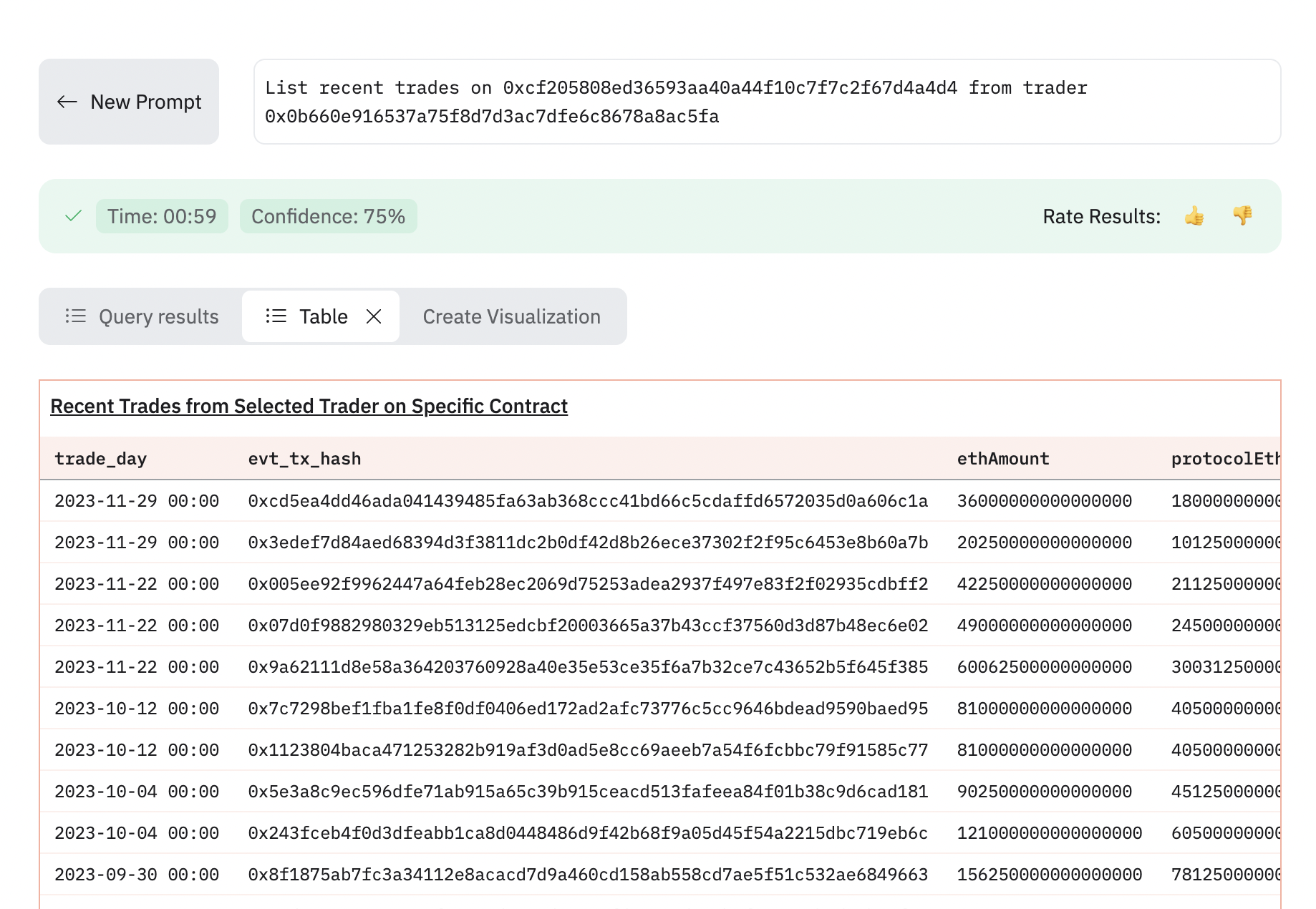
Identifying project names and finding their respective curated tables
Prompt: “list of wallets that have traded more than 2500 usd on blur” Prompt Engineering Tip: Include project names or schemas in your prompt. Below includingblur in the prompt will help Dune AI identify all curated tables under that schema. Blur has many curated tables but the LLM selects the most relevant one (blur.trades) based on the context of the prompt.
If you want to validate the spelling of the project name, all schemas are listed in the data explorer
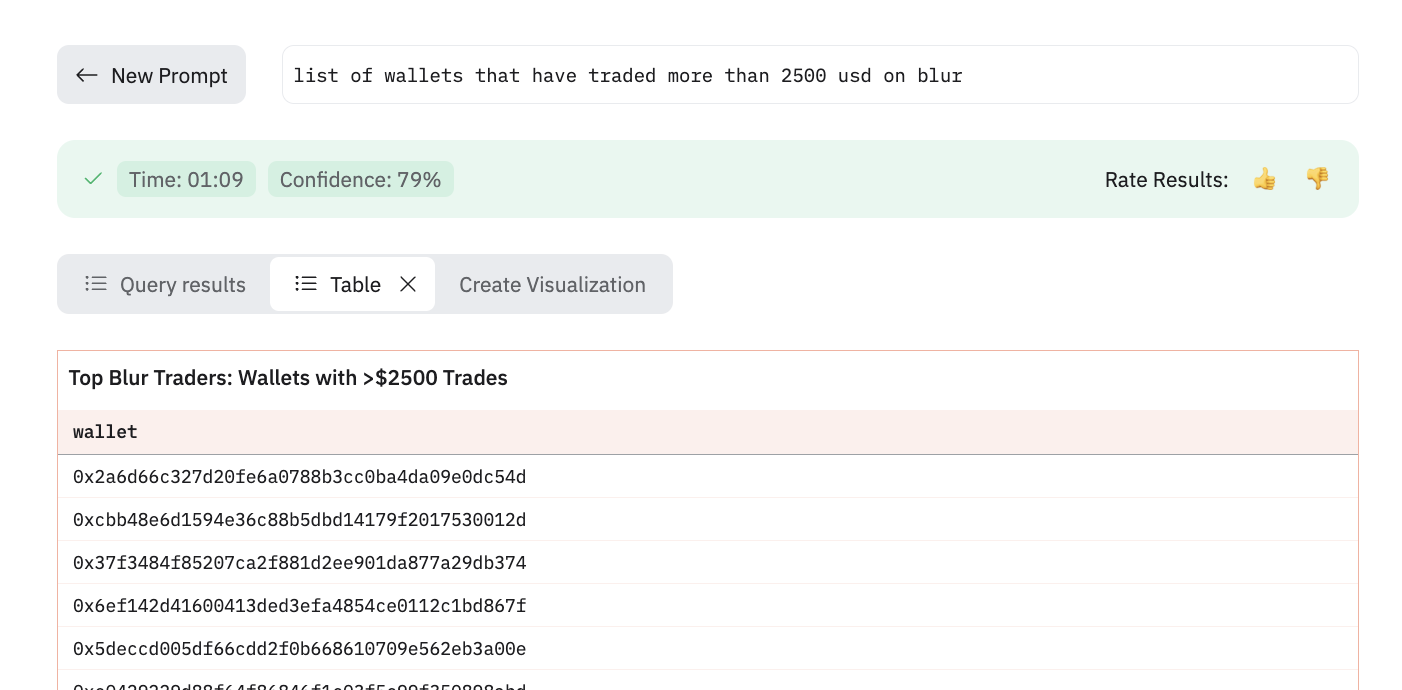
Identifying project names and finding relevant events
Prompt: “top transfer receiver on lido on base” Prompt Engineering Tip: Include project names or schemas in your prompt. Similar to finding relevant curated tables, including project names in your prompt will help Dune AI identify the relevant functions and tables. In this example forlido, the LLM selects the most relevant event Transfer and the lido_base.wsteth_evt_Transfer based on the context of the prompt.
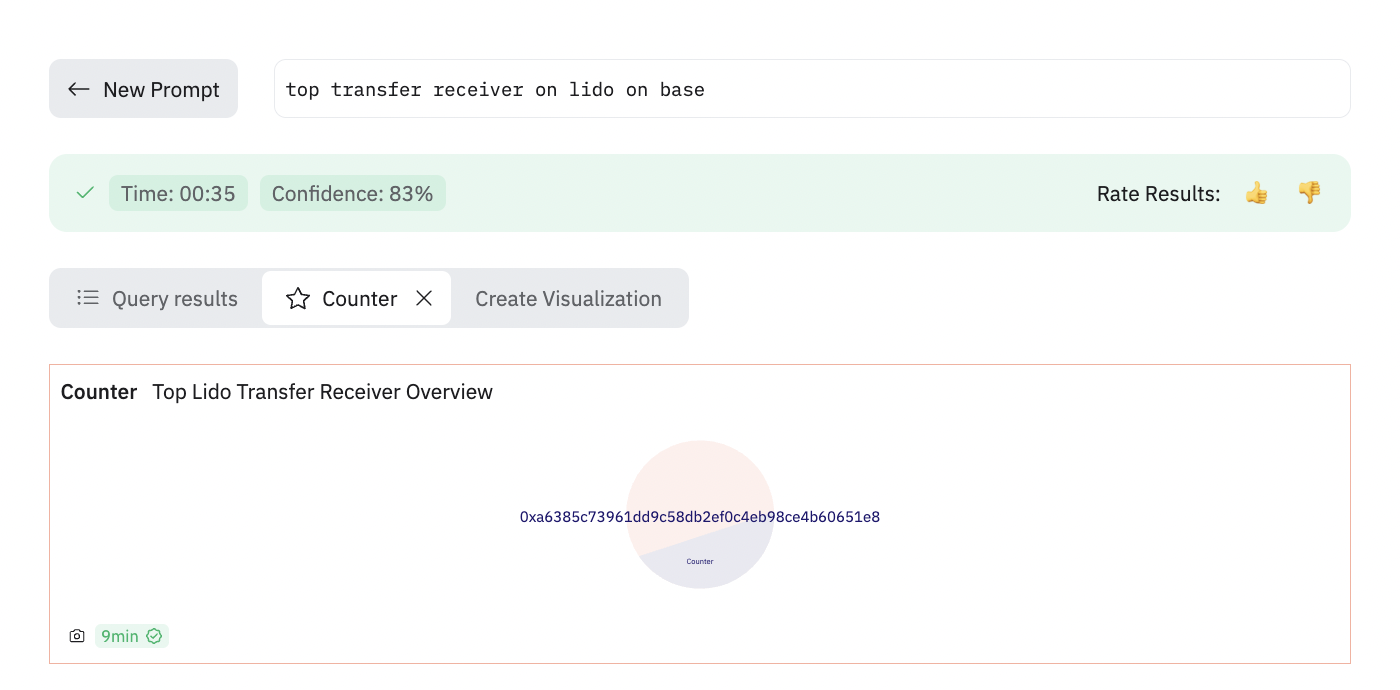
Identifying token symbols and finding their contract addresses and contract types
Prompt: “DAI token swaps today” Prompt Engineering Tip: Including token symbols (in CAPs) in your prompt will help Dune AI identify the relevant contract addresses and contract types. In this example, the LLM selects the most relevant contract address0x6b175474e89094c44da98b954eedeac495271d0f and contract type ERC20 based on the context of the prompt. Many token addresses are already embedded in the LLM’s knowledge base, but using CAPS will help this happen deterministically. This isn’t limited to EVM and this works also for Solana tokens.
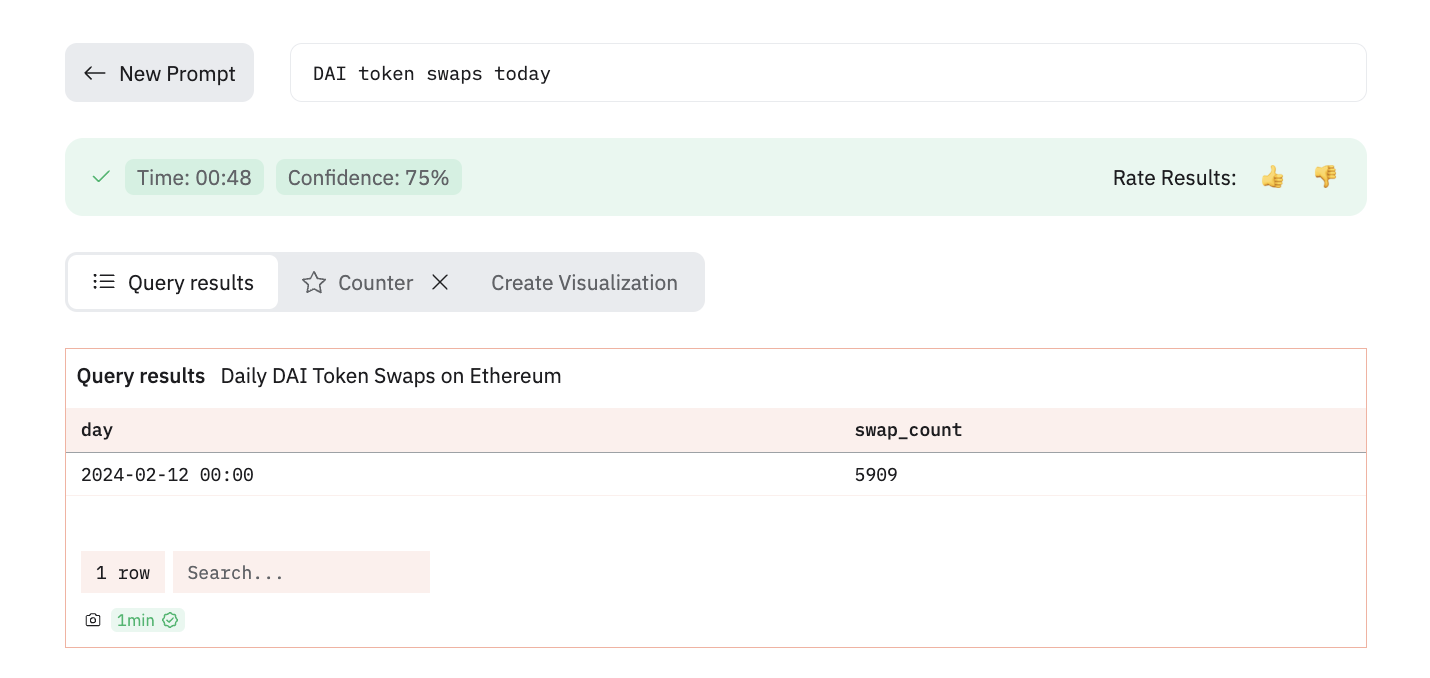
Asking about your own wallet
Prompt: “what chain has my wallet transacted the most value?” Prompt Engineering Tip: Saying “my wallet” will prompt the LLM to use the wallet address linked to your profile to provide personalized insights and analytics.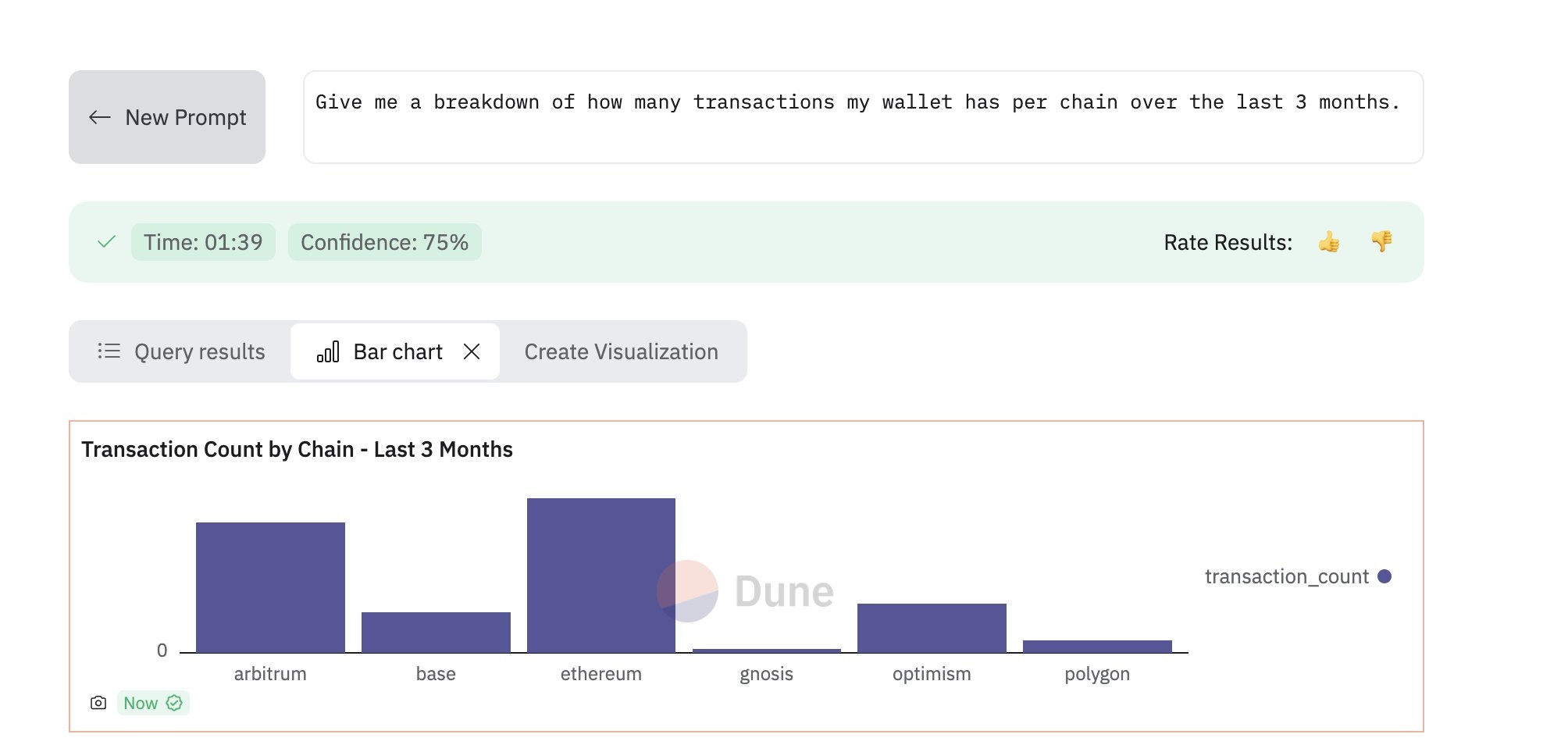
Best Practices for Prompt Engineering
- Iterate: Don’t hesitate to refine your prompts based on the responses you get.
- Be Specific: The more specific your prompt, the more targeted the AI’s response will be.
- Use Examples: When possible, provide examples within your prompt to guide the AI’s understanding.